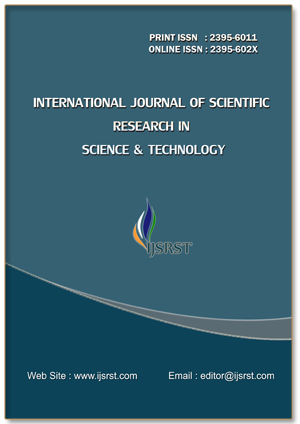Partnership Planning For M and E and Performance of Public Agricultural Projects in Galana Kilifi County, Kenya
DOI:
https://doi.org/10.32628/IJSRST52411139Keywords:
Partnership planning for M&E, Performance of public agricultural projects, expectancy theory, research incentives, joint on-farm research, farmer training and demonstration, partnership skills and experienceAbstract
Performance of public agricultural projects in Galana, Kilifi County is viewed in terms of food security, reduction in food prices, creation of jobs through production, agro-processing, packaging, distribution, exportation and tourism. Success of M&E System among pioneer countries of Australia, Chile, Colombia and China is attributed to Partnership planning for M&E. In as much as the Kenyan constitution recognizes the right of every person to be free from hunger and have adequate food of acceptable quality and quantity, vision 2030 aims to make Kenya a rapidly industrializing country by 2030 seems unrealistic since performance of public agricultural projects in Kenya is marred with food insecurity, rising food prices, poverty due to lack of employment in growth of agro-processing, packaging, distribution, exportation and tourism industries. The purpose of this study was to establish how Partnership Planning for M&E influence performance of public agricultural projects in Galana Kilifi County, Kenya. The objective of the study was to assess the extent to which partnership planning for M&E influence performance of public agricultural projects in Galana, Kilifi county, Kenya. The significance of the study is of the sense that the government, farmers, extension agents and the community are expected to benefit from this study since the components of Partnership planning for M&E will optimize productivity, enhance effective resource management and achieve the agenda of food security. The study adopted pragmatic paradigm with mixed methods research approach, using descriptive survey research design and correlation. A total of 226 research respondents, composed of 21 senior level managers, 82 middle level managers and 123 junior level managers, participated in the study drawn from a population of 550 respondent guided by Krejcie and Morgan theory of sample size determination. Self-administered questionnaires and an interview guide was used to collect quantitative and qualitative data. To ensure validity and reliability of the research instruments, pilot testing was conducted prior among 23 participants. Cronbach’s alpha at α =0.870 was attained as the reliability coefficient of the pre-test retest of instruments. Descriptive and inferential statistics were used to analyze data. Simple and multiple linear regression and Pearson Correlation Coefficient models were used to determine the extent to which Partnership Planning for M&E influence performance of public agricultural projects. Tests of statistical assumptions were carried out before data analysis to avoid invalidation of statistical analysis. The hypothesis was tested at α=0.05 level of significance. Results shows that: 1.HO: Partnership planning for M&E does not significantly influence performance of public agricultural projects was rejected since P-value=0.000<0.05. The study concluded that there is a significant influence of partnership planning for M&E on the performance of public agricultural projects.
Downloads
References
ACF International. (2011). Food security and livelihood monitoring and evaluation guidelines, A guideline for field workers, (2),43-55.
Chowdhury A., Odame, H and Leeuwis C. (2015). Transforming The roles of a Public extension agency to strengthen innovation:Lessons from the national agricultural extension project in Bangladesh, Journal of Agricultural Education and Extension, 20:1, 7-25. DOI: https://doi.org/10.1080/1389224X.2013.803990
Creswell, J. (2003). Research Design: Qualitative, Quantitative and Mixed Approaches (2nd Edition), Thousand Oaks Sage Publications.
Donald, K and Delno, L.(2006). Proposal and thesis writing, Paulines Publications, Africa, ISBN 9966-08-133X.
Etwire, P., Dogbe, W., Wiredu, A., Martey, E., Etwire, E., Owusu, R and Wahaga, E. (2013). Factors influencing farmers participation in agricultural projects: The case of the agricultural value chain mentorship project in the Northern Region of Ghana, Journal of Economics and Sustainable Development, 4:10.
Huber, S. (2004). School Leadership and Leadership Development, Journal of Educational Administration,42(6), 669-684. DOI: https://doi.org/10.1108/09578230410563665
Johnson, R and Onwuegbuzie. (2014). Mixed Methods Research: A Research Paradigm Whose Time Has Come, Educational Researcher, 33(14). DOI: https://doi.org/10.3102/0013189X033007014
Karamidehkordi, E. (2013). Public-private policy change and its influence on the linkage of agricultural research, extension and farmers in Iran, Journal of Agricultural Education and Extension, 19:3, 237-255. DOI: https://doi.org/10.1080/1389224X.2013.782167
Kinyanjui, J. (2014). Influence of contextual and cognitive factors on the relationship between performance contracting system and organizational performance in government ministries in Kenya, PhD Thesis.
Kothari, U. (2002). Research methodology and techniques, New Age International Ltd, New Delhi.
Krejcie, R. and Morgan, D. (1970). Determining sample Size for research activities, Educational and Psychological Measurement, Vol.30, 607-610. DOI: https://doi.org/10.1177/001316447003000308
Lawther, I (2017), Why african countries are interested in building partnerships with China:lessons from Rwanda and Uganda, Third World Quarterly, 38(10), 2312-2329 DOI: https://doi.org/10.1080/01436597.2017.1333889
Maphosa, B (2016), Alleviating poverty through resource provision:The case of a South African agricultural Project, International Journal of African Renaissance Studies-Multi- Inter-and Transdisciplinarity, 11:1, 45-63 DOI: https://doi.org/10.1080/18186874.2016.1212463
Merriam, S (1998), Quantitative Research and Case Study Applications in Education, The Leadership Quarterly,6(3), 361-377
Mertens, D (2005), Research methods in education and psychology: Integrating diversity with quantitative and qualitative approaches. (2nd edition), Thousand oaks: Sage
Mugenda, O and Mugenda, A (2003), Research Methods:Quantitative and Qualitative Approaches, Nairobi
Okello, S (2015), Factors perceived to influence financing of Build-Operate-Transfer projects in Kenya: The case of Rift Valley Railways Consortium, Thesis Report, University of Nairobi
Onwuegbuzie, A and Johnson, R (2006), The Validity Issue in Mixed Research, Research in the schools,13(1), 48-63
Rambo, C (2008), PhD Thesis on Financing of Distance Learning in Kenya. A Focus on Bachelor of Education Programme of the University of Nairobi
Taylor, M (2000), Communities in the lead: power, organizational capacity and social capital, Urban Studies Journal, 37(6), 1019-1035 DOI: https://doi.org/10.1080/00420980050011217
Vibert, F (2007), The rise of the unelected, democracy and the new separation of powers, Cambridge: Cambridge University Press DOI: https://doi.org/10.1017/CBO9780511491160
Downloads
Published
Issue
Section
License
Copyright (c) 2025 International Journal of Scientific Research in Science and Technology

This work is licensed under a Creative Commons Attribution 4.0 International License.
https://creativecommons.org/licenses/by/4.0





